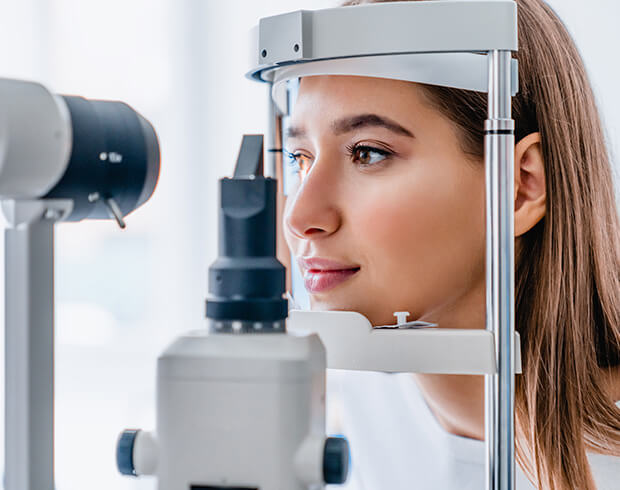Comprehensive Eye Exams in Manhattan Beach, CA
Eye Exams That Exceed Expectations
At Look Optometry, we really enjoy showing patients the results of their comprehensive eye exams. Most people who see the results of an Optos or OCT are surprised by how detailed the screens are and want to know more about their eyes. They also learn just how easily we can catch an emerging eye condition — allowing us and our team to take immediate action to protect your eyes.
What Are Comprehensive Eye Exams?
A trip to the eye doctor is so much more than just figuring out your vision prescription — we also check for eye conditions and run extra tests that are adjusted to your specific needs. The kinds of problems children tend to face are very different from middle-aged adults. This is why we value frank and open communication so highly because it allows us to customize your care to your needs.


Why Are Comprehensive Eye Exams Important?
Your eyes are constantly changing, even if your vision’s prescription doesn’t change. Kids are at risk of developing eye misalignments, and adult eyes over the age of 40 become increasingly at-risk for eye diseases like macular degeneration, cataracts, and glaucoma. Innovations in engineering have made modern optometry equipment so precise, we can detect certain conditions before symptoms develop, and spring into action proactively, so you can find relief and get ahead of anything your eyes my throw at you.
The Heart of Our Practice: Accurate & Innovative Eye Exams

Pediatric Eye Exams
Our children’s eye exams are close to that of an adult’s, except we use smaller equipment (for their smaller noggins) and check for different diseases (like strabismus and myopia).

Contact Lens Exams
Contact lenses need their own special tests — a proper contact lens exam makes sure you get the right lens for your eyes, so the lenses help you see clearly and comfortably.

Diabetic Eye Exams
Diabetes leads to complications that can permanently harm your vision. Our diabetic eye exams add additional tests to screen for conditions like diabetic retinopathy, so that we can remain proactive about your eye care.
Look at Our Advanced Tech!
Your health and vision are our priority, and the only way to truly prioritize your eye care is by investing in the best tech. Whether you need fitted for specialty lenses like Neurolens, or you need an accurate screen to determine the root cause of your dry eye, our team has the best available and a team that knows how to use it.

Why Choose Look Optometry for Your Eye Exam?
We quickly figure out what’s up with your vision and roll out treatments that are just as effective as they are swift, so you can get back to enjoying the beach with clear, comfortable vision. Our doctors at Look Optometry are all about blending top-notch skills with a friendly, approachable vibe.


